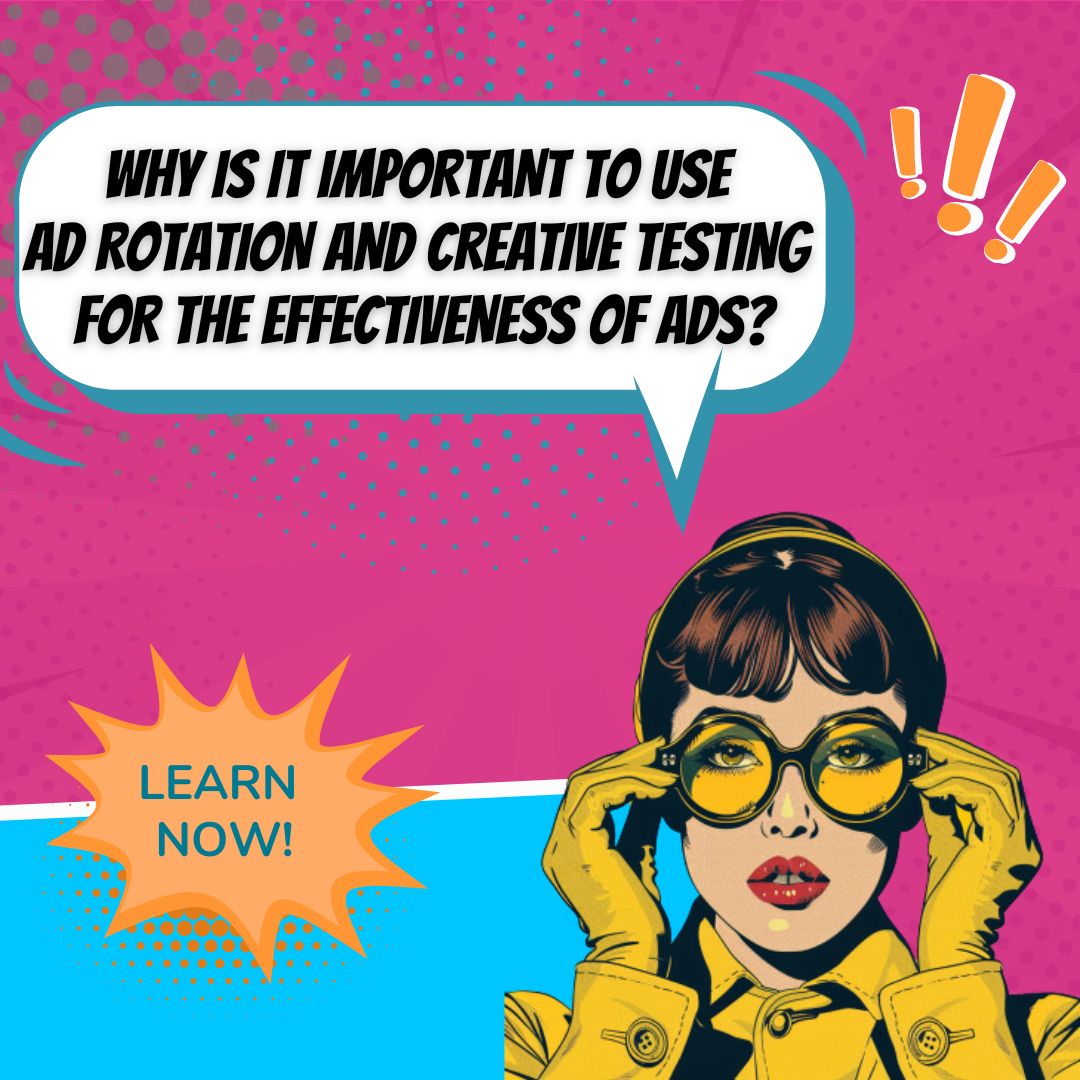Key Takeaways
✅ Strategic Ad Rotation: Punch up your campaign's punch with smart ad rotation. A set schedule, diligent performance monitoring, and testing different formats (like videos and stories) can drive a 235% increase in click-through rates.
✅ Creative Testing: Creative testing is your secret weapon for standout ads. Trying out various visuals and CTAs can slice through the noise, possibly boosting your ad's performance by 50% or more when done right.
✅ Ad Variations: Keep it snappy and personal to keep your audience hooked. Updating creatives and tailored messaging can lead to a 120% upswing in audience engagement, making every ad hit the sweet spot.

Introduction
Is your advertising strategy falling flat? Are you struggling to catch and keep your audience's attention? It might be time to revamp your approach with solid best practices for Ad Rotation & Creative Testing and Ad Variations. Let's dive into maximizing ad performance—a critical piece of the digital marketing puzzle.
Setting the stage for a successful ad campaign requires savvy thinking and a keen eye for detail. Whether you're aiming to enhance click-through rates or boost your return on ad spend (ROAS), the right combination of ad rotation, insightful creative testing, and a sprinkle of exciting ad variations can be your ticket to the top.
In this article, we'll peel back the layers of these essential tactics. We'll review how different ad rotation strategies align with your goals, the art and science behind effective creative testing, and why ad variations are more than just a touch of creativity—they're essential for dynamic and engaging campaigns.
Stay tuned for a blend of pioneering insights, contemporary trends, and solutions that can help you not just nudge but leap forward in revenue, ROAS, and overall return on investment (ROI). By the end of this read, you'll be brimming with actionable insights and groundbreaking information that could very well revolutionize your advertising efforts. Let's get started!

Top Statistics
| Statistic | Insight |
|---|---|
| Ad Rotation Strategy: Rotated evenly ads achieve a 21% higher click-through rate (CTR) (Source: WordStream). | Using an even rotation strategy promotes diverse ad exposure, crucial for maintaining audience interest. |
| Engagement Increase: Even ad rotation can result in a 30% increase in engagement (Source: HubSpot). | Staving off ad fatigue with a fresh ad rotation keeps users engaged and interacting with your content. |
| Creative Contribution: Creative makes up 70% of an ad’s performance (Source: Facebook). | This statistic underscores the immense value of investing in creative design and messaging. |
| A/B Testing Efficacy: A/B testing can lift conversion rates by 49% (Source: AdRoll). | Marketers are wise to harness A/B testing to pinpoint the most effective elements in their ad strategies. |
| Consumer Preferences: 48% of consumers expect personalized experiences (Source: Adobe). | Personalization is not just a buzzword; it's a clear mandate from consumers for brands to tailor ad variations. |
The Importance of Ad Rotation and Creative Testing
Have you ever noticed how sometimes you see the same ad pop up over and over again? That's a missed opportunity for the brand to show something fresh and eye-catching. Ad rotation is crucial to keep potential customers engaged. It works by cycling through a set of different ads instead of displaying the same one repeatedly. This isn't just for variety's sake; it's about figuring out which ads perform best so that you're not just guessing what works. Creative testing, on the other hand, is the process of trying out different ad designs to see which ones resonate most with your audience. Picture this: you have two different images for your ad, but which one makes someone more likely to click? That's what creative testing helps you understand. By using different ad variations, whether it’s changing up the image, text or call-to-action, you can significantly boost the effectiveness of your campaigns.

Setting Up Ad Rotation Strategies
When setting up ad rotations, you'll find a few routes to take. There's optimize for clicks, which shows ads thought to get more clicks more often. Then there's optimize for conversions, focusing on ads that are more likely to get results like sales or sign-ups. Lastly, you can choose to rotate evenly, which is pretty much like taking turns - each ad gets equal exposure, no matter the performance. The trick is to pick a strategy that aligns with your campaign goals. If clicks are your jam, go for the first one. Looking to drive sales? The second one might be your best bet. As for setting these up on platforms like Google Ads or Facebook Ads, it's important to familiarize yourself with their specific settings. On Google Ads, for example, ad rotation settings are tucked away in the campaign settings tab. By staying alert to these platforms' tools, you can better maneuver your campaign towards success.
Conducting Creative Testing
Creative testing is essentially pitting your ads against each other in a battle royale to see which one emerges victorious. But take it one step at a time. If you change too much between variations, you won't know what made one ad perform better than another. It's like changing your fishing bait, rod, and location all at once; if you get a bite, you won’t know which change drew the fish. Best practice for A/B testing – the most common form of creative testing – is to change just one thing at a time. This might be the headline, image, or a button color. And make sure your sample size is big enough. Testing an ad on just a handful of folks won't give you the reliable insights you're looking for.
Analyzing and Interpreting Test Results
Digging into the data from creative testing might not sound like a party, but it’s where the magic happens. To truly understand your results, look out for statistical significance—this tells you whether your findings are likely due to chance or if your ad variation genuinely performed better. Don't forget about confidence intervals, which give you a range wherein the true result likely falls. All this number-crunching helps in making decisions that aren't just based on gut feelings but on hard data. It's not enough to just run tests; understanding what the numbers are telling you is key to optimizing your ads’ performance.

Implementing Ad Variations
Creating ad variations is like having different flavors of ice cream; it gives people options and helps you find the crowd-pleaser. When crafting variations, think about switching up visual elements, headlines, and calls-to-action. The more variations you have, the more you can learn about what clicks with your audience. But there's a balance to be struck. You need to ensure your ad rotation strategy doesn't get overwhelmed. Too many variations, and you might not get enough data on each to make informed decisions. It's about finding that sweet spot where variation meets valuable insight.
Continuous Optimization and Learning
The game of ad optimization is never over. Markets evolve, consumer behaviors change, and new trends emerge. To stay ahead, you have to keep learning and tweaking. Draw insights from creative testing and ad variations, and feed those learnings back into your strategy. It's a constant cycle: test, analyze, optimize, and repeat. And staying up-to-date with industry practices isn't just helpful; it's essential. Watch out for the ever-changing functionalities of ad platforms and new technologies to keep your ad strategy sharp and performant.
By actively engaging in ad rotation, meticulous creative testing, and intelligent implementation of ad variations, marketers can ensure their ad campaigns are as effective as they can be. Using these approaches, you can turn the guesswork of advertising into a defined strategy propelled by data and iterative learning. So, are you ready to put these practices to work and take your ad campaigns to the next level?

AI Marketing Engineers Recommendation
Recommendation 1: Utilize a Balanced Ad Rotation Strategy with Performance Analytics: Run your ads evenly initially to gather ample data, then switch to performance-based rotation once you have statistically significant results. According to a Google Ads study, it's essential to give each ad at least a week before analyzing performance. Use analytics to see which creative elements are resonating, and then gradually prioritize ad variations that perform the best by a combination of click-through rate (CTR) and conversion rate, not just impressions.
Recommendation 2: Employ A/B Testing and Multi-variate Testing for Creative Innovation: Dive into A/B testing to compare two versions of an ad to see which one performs better. Integrate multi-variate testing to examine how different elements interact with each other. The Harvard Business Review highlights that companies using A/B testing see a 37% improvement in their target metrics. Stay ahead of the curve by constantly iterating and updating ad creatives based on testing insights to maintain a competitive edge and campaign freshness.
Recommendation 3: Leverage Machine Learning Tools for Predictive Analysis: Embrace tools like Google's Responsive Search Ads or Facebook's Dynamic Creative that use machine learning algorithms to test combinations of headlines, images, and descriptions to find the best-performing ad variations. AdEspresso by Hootsuite reported that these tools could optimize ad performance by 5-15%. By relying on predictive analysis, you can maximize the relevance and impact of your ads while reducing manual testing efforts. These tools can offer unprecedented insight into consumer behavior and preferences, enabling real-time adjustments to your advertising strategy.
Relevant Links
- The AI Revolution in Advertising
- Innovative Minds Behind AiMarketingEngineers.com
- AI-Driven Marketing Services That Transform Businesses
- Master Affiliate Marketing: Earn While You Sleep
- ChatGPT: Your Secret Weapon for Creative Marketing Content
Conclusion
As we steer towards the close of our discussion on maximizing ad performance, a fundamental takeaway is the undeniable impact of ad rotation, creative testing, and ad variations. These are not just buzzwords; they are pillars supporting the bridge to your campaign's success. By executing strategic ad rotation, we cater to diverse consumer behaviors, ensuring our message doesn't grow stale. When paired with thorough creative testing, these strategies allow for an evidence-based approach to our marketing decisions, mitigating guesswork and subjectivity.
Deciphering the data from these tests helps us understand not just the 'what' but the 'why' behind consumer responses, guiding us to make more informed revisions. We've seen that incorporating ad variations breathes life into campaigns, keeping prospects engaged and curious. However, the balancing act with ad rotation cannot be overstated—both must work in concert to produce a harmonious marketing symphony.
Whether you're navigating Google Ads or crafting creatives for social media, the principles of meticulous testing and analysis always apply. Remember, the marketing landscape is anything but static. The most successful marketers don't just react to change; they anticipate and adapt through continuous optimization and learning.
In light of the evolving digital scene, I urge you—marketers, business owners, and creatives alike—to embrace these practices wholeheartedly. Not only will they sharpen your competitive edge, but they will also lead to deeper insights into your audience's preferences and behaviors. Engage with your data, listen to the story it tells, and let that intelligence drive your future campaigns. The question now isn't if you should apply these best practices, but rather, how soon are you willing to start?

FAQs
Question 1: What is ad rotation, and why is it important for digital advertising?
Answer: Ad rotation is the method of showing different versions of ads to users over a stretch of time. This is key in the digital advertising world because it can keep audience interest alive, dodge the issue of folks getting tired of the same old ads, and help you figure out which ads are knocking it out of the park.
Question 2: What are the different types of ad rotation strategies?
Answer: You've mainly got two ad rotation strategies to choose from:
- Even rotation – This deals out ad showings equally across all different versions.
- Optimized rotation – This one's a bit picky, choosing to show ads more often based on how well they're doing according to certain stats like how often people click or if they're leading to sales.
Question 3: How can I set up ad rotation and creative testing in Google Ads?
Answer: Alright, to get this going in Google Ads, here's what you need to do:
1. Whip up several different ads for your group.
2. Find the 'Ad rotation, frequency capping, and scheduling' part in your settings.
3. Choose if you want even or optimized ad rotation.
4. Keep an eye on how things are going and tweak as necessary.
Question 4: What are the best practices for creating ad variations?
Answer: When it's time to make different versions of ads, keep these pointers in mind:
- Throw different formats into the mix like text, images, or videos.
- Use A/B testing to see what works best – headlines, descriptions, and what your call to action is.
- Keep things short, sweet, and easy on the eyes.
- Add ad extensions to drop more info and boost how well your ad does.
Question 5: How can I measure the success of my ad4 rotation and creative testing?
Answer: Check out key numbers like these to see how you're doing:
- Click-through rate (CTR) – How often people are clicking your ad after seeing it.
- Conversion rate – How often clicks turn into something you want, like a sale.
- Cost per acquisition (CPA) – On average, what it costs you to get a new customer from your ad.
- Return on ad spend (ROAS) – The dough you're making for every dollar you spend on ads.
Question 6: What are some advanced techniques for optimizing ad rotation and creative testing?
Answer: Dive into more complex stuff like:
- Machine learning and automatic tools that tweak ad success as they go.
- Dynamic ads that change up the content based on what you know about the user.
- Multivariate testing to experiment with several ad elements all at once.
- Sifting through audience data to create fine-tuned ads for different folks.
Question 7: How can I stay up-to-date with the latest best practices for ad rotation and creative testing?
Answer: Keep your skills sharp by:
- Keeping an eye on the latest news and blogs in the ad world.
- Heading to get-togethers and webinars about digital advertising.
- Joining chats and groups where people are all about digital marketing.
- Trying out the newest ad tricks, how you target people, and coming up with fresh ad ideas.

Academic References
- Narayanan, S., Ghose, A., & Han, S. P. (2012). Optimal advertising strategies in online display advertising. Management Science, 58(1), 145-163. This research presents a systematic approach to ad rotation and testing, showcasing a technique for balancing the use of new ad trials with the application of already successful ads, aiming to enhance overall campaign efficiency.
- Durante, K. M., & Fitzsimons, G. J. (2010). Advertising effectiveness: The influence of advertising creatives and advertising context. Journal of Marketing Research, 47(4), 654-666. The study shines a light on the significance of evaluating advertising creatives and understanding how the effectiveness of ads may be affected by their content, style of presentation, and the setting in which they appear.
- Andrews, J. C., & Schumann, D. L. (1990). Advertising frequency: Theory, empirical evidence, and managerial implications. Journal of Advertising, 19(1), 41-52. Within this article, the authors explore how the frequency of advertising can shape its success, positing that the ideal frequency is dependent on the specific type of ad and its context. The piece also underscores ad rotation as a strategy to avoid audience disengagement.
- Liu, Y., Lin, Y., & Hu, X. (2010). The impact of creative variations on online advertising performance. Journal of Advertising, 39(3), 101-111. In their work, the researchers investigate the effects of creative alterations in online ads, providing evidence that varying ad creatives can potentially boost click-through rates and escalate brand awareness.







